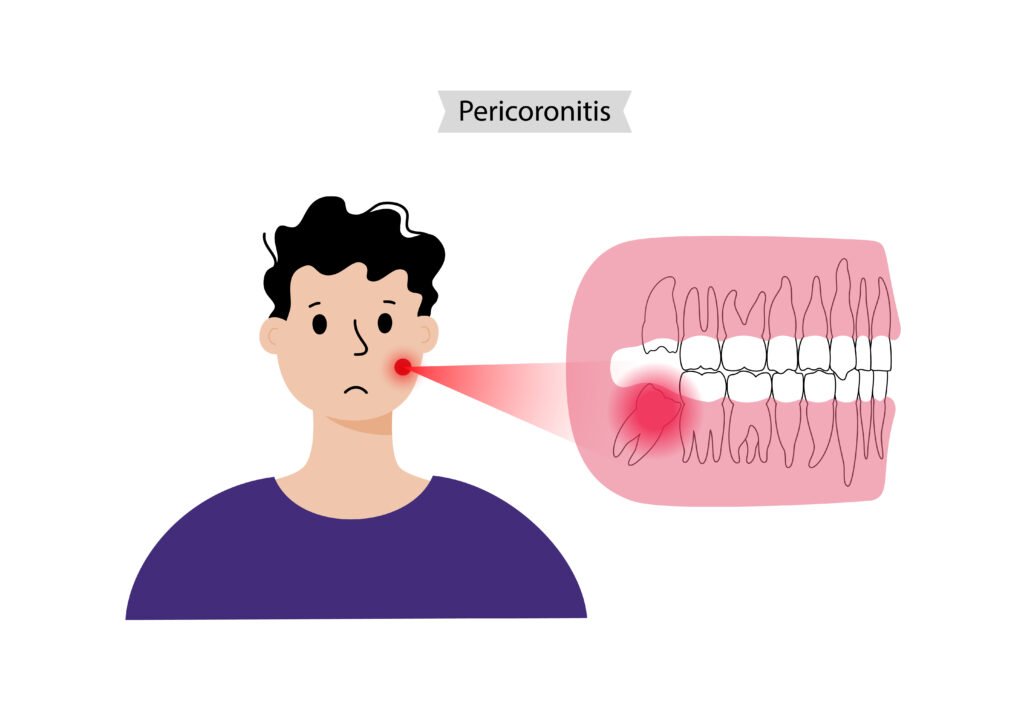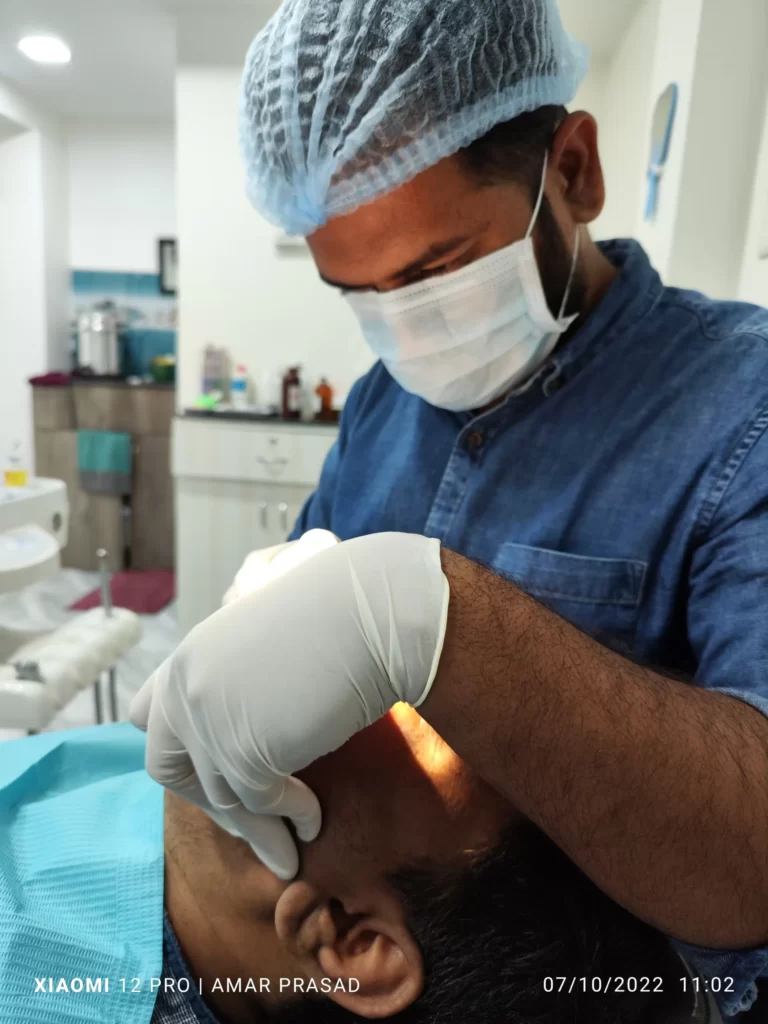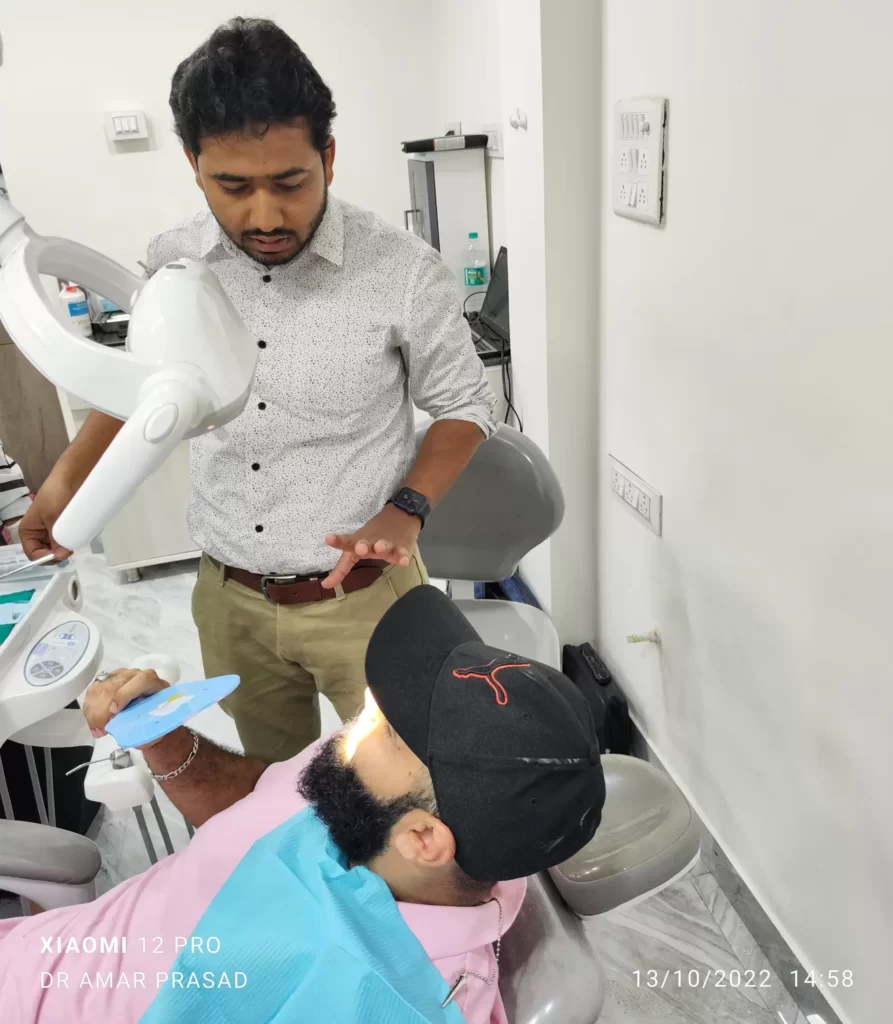Click to call
Pericoronitis
What is it all about?
Have you ever experienced discomfort or pain when your wisdom teeth were coming in? If so, you might have had a common dental issue known as pericoronitis. Pericoronitis is like a little ‘angry’ gum around your wisdom tooth, causing pain, swelling, and sometimes even a bad taste in your mouth. It’s a bit like when a splinter gets under your skin – it can be bothersome. But don’t worry; we’re here to help you understand what pericoronitis is and how to deal with it to keep your smile healthy and pain-free
Causes
Wisdom Teeth Troubles: Wisdom teeth, also known as third molars, are the last set of teeth to emerge, usually in your late teens or early twenties. Sometimes, they don’t have enough room to come in properly.
Hidden Nooks and Crannies: When these wisdom teeth only partially emerge, they create a little flap of gum tissue over them. This gum flap can be like a tiny pocket that can trap food particles and bacteria.
Oral Hygiene Matters: If you aren’t diligent about keeping this area clean, those trapped bits of food and bacteria can lead to an infection.

Diagnosis
Diagnosing pericoronitis is like solving a little dental mystery. When you visit your dentist with the symptoms of pericoronitis, they will go through a few steps to figure out what’s happening:
Visual Examination: The dentist will first take a look inside your mouth. They’ll check the area around your wisdom teeth to see if there’s redness, swelling, or any signs of infection.
X-Rays: In some cases, your dentist might want to take X-rays. These are like special pictures of your teeth and jawbone. X-rays help the dentist see if there are any hidden problems, like impacted teeth or other issues below the gumline.

Treatment
Antibiotics: Think of these like the ‘superheroes’ that fight off the infection. Your dentist might give you antibiotics to clear up the problem.
Pain Relief: Pericoronitis can be pretty painful, but your dentist can give you some ‘pain zappers’ to make you more comfortable.
Rinsing and Care at Home: Just like a spa day for your mouth, your dentist will show you how to rinse the sore area with warm saltwater and keep it clean at home.
Cleaning: Sometimes, the dentist needs to do a little ‘cleaning session’ to remove any stuff causing trouble. It’s like a mini dental spa treatment for your gums.
Surgery: If things are more serious or keep coming back, your dentist might recommend a ‘little fix.’ They could remove the extra gum tissue or even the tooth causing the issue. It’s like getting rid of the root of the problem.

